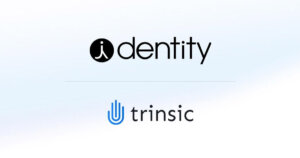 Revolutionizing media monetization by unlocking the power of ownership in web3 – SlateCast #52
Revolutionizing media monetization by unlocking the power of ownership in web3 – SlateCast #52 In the latest episode of the SlateCast, we look at Access Protocol‘s new web3 subscription service, which is being integrated into the CryptoSlate ecosystem. The podcast covers:
- Introduction to Access Protocol and the problem it aims to solve
- Overview of the ACS staking model and how it changes the relationship between creators and consumers
- Discussion of the launch date and partnerships with major publications in the Web3 space
- Explanation of how ownership and token inflation work in the Access Protocol ecosystem
- Comparison of Access Protocol to off-chain solutions like Patreon and the benefits of ownership in Web3
- Potential for value-add strategies on top of the staking model, including tiered staking and loyalty programs
- The challenges of bringing Web2 creators to Web3 & user experience hurdles of Web3
- The future vision for access protocol and plans for its growth
- The partnership between Access Protocol and CryptoSlate
Access Protocol
Access Protocol is a new platform that aims to integrate content into an on-chain environment and build communities. CryptoSlate, in collaboration with Access Protocol, is set to launch a new product soon. Access Protocol provides a new solution to the classic problem of low audience penetration rates among media companies.
“The problem we’re trying to solve is the kind of New York Times $24.99 subscription that doesn’t convert and no one wants to pay for.”
Even the top media companies have only half a percent or 0.3% audience penetration rates, and the existing subscription model is not working. Access Protocol solves this problem through the ACS staking model, where the creators create a staking pool, and users acquire ACS tokens and stake them in the creators’ pool. Once they’ve staked, they receive access to some premium content. This model changes the relationship between the consumer and the creator from value extractive to owning a part of the access ecosystem and subscribing through that.
“Here when you subscribe to things, you also own a part of the entire access ecosystem. And so you can benefit from the fact that we have great publications that will bring on a lot more users and that ownership is really powerful.”
Creators make money indirectly through revenue from inflation, and part of it goes to them. Publishers can also view this as a recurring revenue side. The ACS token demand is tied to the subscription demand from the partners on board and the users they’re able to onboard.
The rewards going to publications such as CryptoSlate, the Block, CoinGecko, Crypto Briefing, etc., are not expected to create downside potential as the reward rate is equivalent to the bitcoin block rewards have been, which is completely fine. Moreover, publications can layer lots of strategies on top, such as special entertainment or events for special users. The concept of ownership is powerful in web3, and owning a part of the access ecosystem can be very enticing for consumers.
The hypothesis is that ownership will make the consumer subscription more attractive than the existing subscription model. The success of Access Protocol’s program with Coin Gecko, where users can convert their candies to locked ACS subscriptions for a year, is a good data point that the new model can work.
The vision for Access is to become a fully community-run protocol and a monetization layer for various platforms. It plans to launch in Q1 2023, and updates can be found on its website and social media channels.



 CryptoQuant
CryptoQuant 




































































